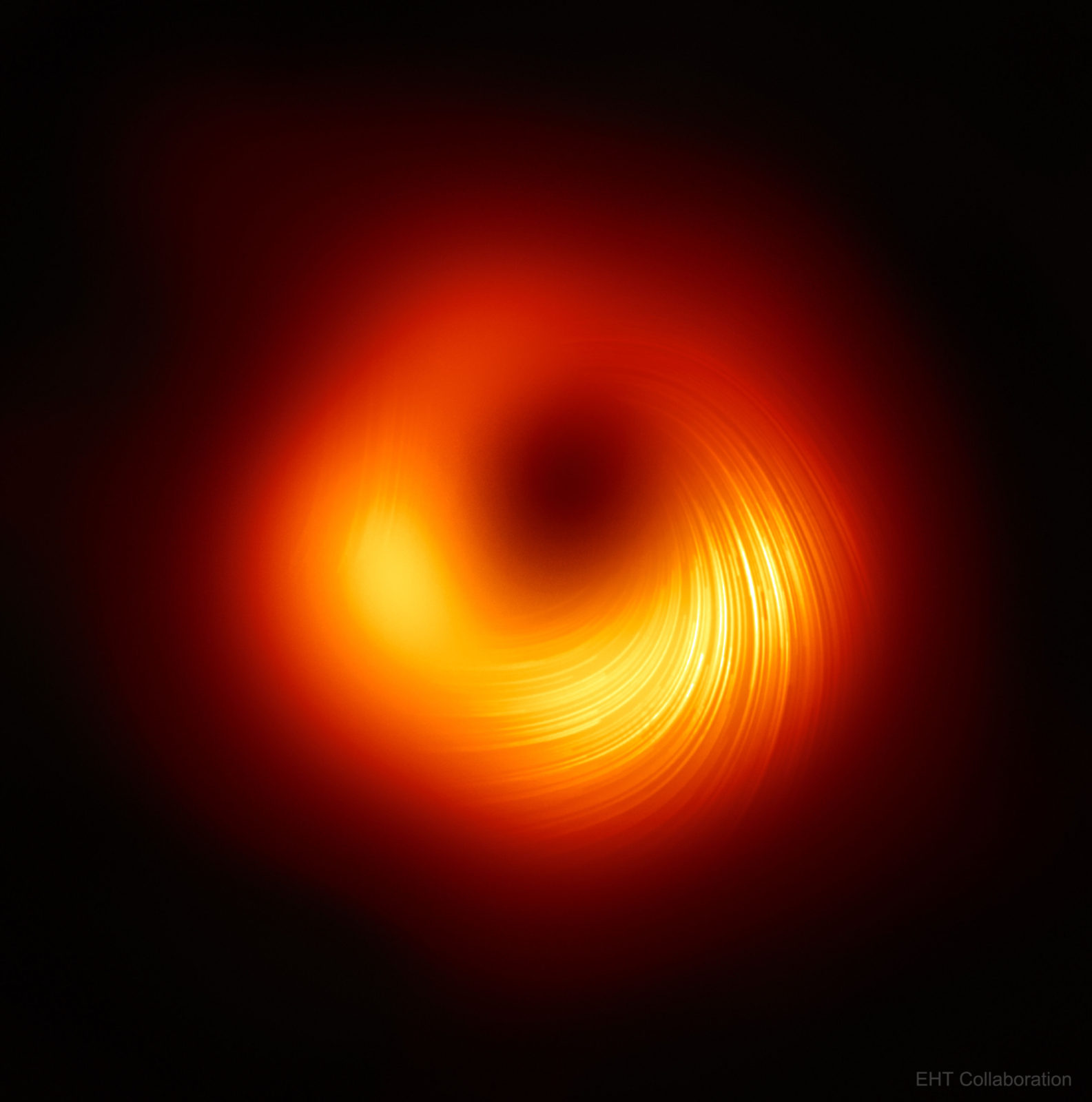This is the second and final part on the series of blogposts titled “The Science Behind the Solar Eclipse”. In this post, I will build upon the ideas and concepts discussed in Part I of the post to describe how solar eclipses occur. So I strongly recommend reading through it here.
Solar eclipses occur because of the Moon blocks the Sun, as viewed from some point on Earth. As elucidated in Part I, due to the varying distance between the Earth and the Moon, the Moon may block the Sun in its entirety or a portion of it. Another way to think about this is the geometry of the Earth, Moon, and Sun system creates different kinds of shadows, thereby, treating the denizens of Earth with different views of this phenomena.
Partial Solar Eclipse
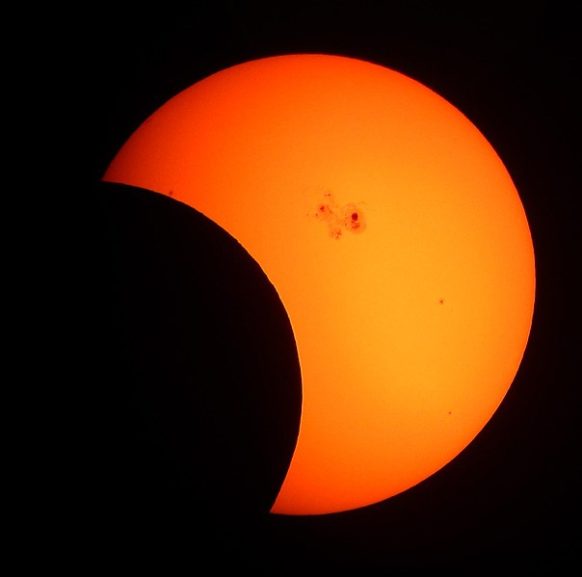
Partial eclipses are the most common type of solar eclipses. Simply put, the Moon covers the Sun partially. This is because the viewer on Earth, the Moon and the Sun are not in a perfect straight line. The Sun is thus only partially obscured, and the uncovered part illuminates the Earth (and is therefore visible to the viewers).
In terms of the shadows, as discussed in Part I of this blogpost series (see the Game of Shadows section), partial eclipses this can be viewed from areas that falls within the penumbra of the Moon’s shadow. On a day when an eclipse will happen, all regions on the Earth upon which the Moon’s shadow falls will experience the partial eclipse (however, they may not experience the other types of eclipses). The solar eclipse on June 10, 2021 was a partial eclipse for residents of several countries (e.g., Netherlands).
Annular Solar Eclipse
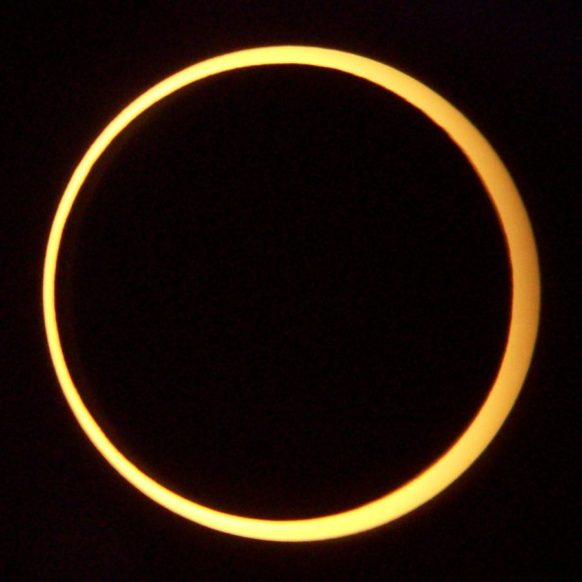
The annular eclipse is also called the Ring of Fire Eclipse. Recall from Part I that the Moon’s distance from the Earth is not fixed, and objects closer to us appear larger. Keeping these two ideas in mind, if the Moon is further away from the Earth in its orbit (hence appears a bit smaller) but lies in a straight line connecting the viewer and the Sun, then it may not be ‘big enough’ to block the entirety of the Sun. As a result, only the central region of the Sun is obscured, leaving behind an extremely bright fiery annulus (Latin for ring). That is why this eclipse is also called the Annular or ‘Ring of Fire’ Eclipse!
Note that the same eclipse event can appear differently for people living at different places on Earth as it all depends on which part of the shadow one observes from. The annular eclipse can be seen by people who are located within the anti-umbra of the lunar shadow. The recent June 10 eclipse could be viewed as an Annular Eclipse in some parts of the world (Canada, Greenland, northern parts of Russia).
Total Solar Eclipse
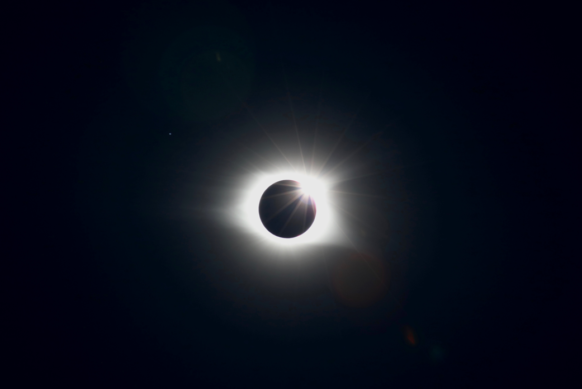
As the name suggests these occur when the Moon completely blocks the Sun. As objects closer appear bigger, for the Moon to totally block the sun, it needs to be closer to Earth in its orbit (i.e., it appears bigger than during the annular eclipse). In addition, it must lie along the line joining the viewer and the Sun, otherwise it will only partially block the sun. When both these conditions are met, the viewer gets the total eclipse experience (see Figures 3)!

The total solar eclipse is preceded and succeeded by partial solar eclipse. The Moon, initially and slowly, starts partially blocking the sun until it completely obscures it – this is when the eclipse reaches ‘totality’. Thereafter, the Moon slowly moves away, revealing more of the Sun (see Figure 4 for how a sequence of partial eclipses lead to totality).
There are several remarkable effects of the total solar eclipse. As an example, as the Moon starts obscuring more of the Sun, there is a significant and perceptible decrease in daylight or brightness (the sky appears like dusk). In fact, the decrease in daylight is enough for the brightest stars and planets to reveal themselves (see Figure 3). Also, temperatures start to drop and animals prepare to fall asleep as they think night approaches.
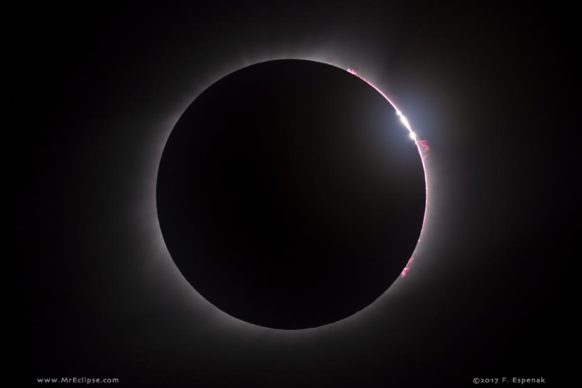
The other magnificent phenomena that can only be seen only during the totality phase of the eclipse are the Bailey’s Beads (Figure 5) or Diamond ring effect (see Figure 6). Unlike a bowling ball or a sphere, the lunar surface is not smooth. The presence of irregularities on the surface (valleys, mountains, craters) allows sunlight to leak through. The areas from where sunlight leaks appear as bright bead like structures called Baily’s beads against the backdrop of the rest of the Moon which blocks sunlight.
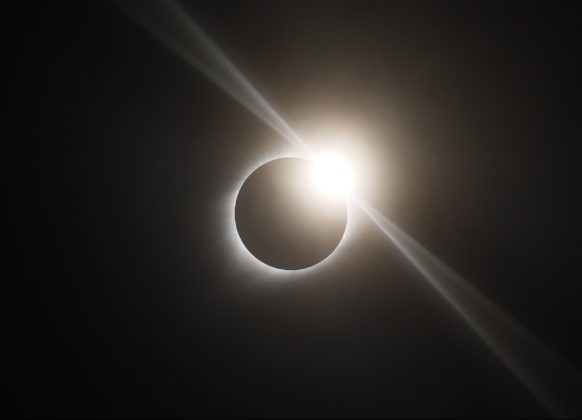
Eventually, as totality is almost reached there are only a few irregularities in a very small lunar region that can allow sunlight to pass. In the backdrop of the darkening Sun, this appears as a single, brilliantly illuminated bead which resembles a glimmering diamond ring (see Figure 6).
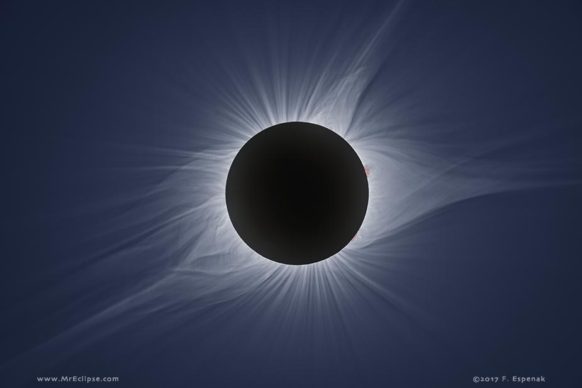
And last but not at all the least, only during totality can we see with our naked eyes the solar corona – a ghostly halo that surrounds the Sun (see Figure 7). The corona itself is not bright enough to be visible to us if sunlight isn’t blocked. But during the total eclipse the conditions are prefect for it to reveal itself! The corona is also really hot with a temperature of a million degrees! Scientists are still trying to understand how such high temperatures can be attained.
The visibility of the total eclipse is limited to parts on the Earth’s surface that lie within the umbra of the lunar shadow. Unfortunately, on June 10 solar eclipse, no point on Earth’s surface fell within the umbra.
Importance of Eclipses
Eclipses are important for cultural, historical, and scientific reasons.
Since ancient times people from different cultures and from different parts of the world have observed solar eclipses. Hence it is not surprising that eclipses are associated with several myths and legends. Examples include Viking sky wolves, Korean fire dogs, Hindu demon swallowing the sun etc. Ancient societies tracked lunar and solar calendars to to establish a calendar system, which allowed them to plant and harvest crops during the appropriate seasons. The meshing of these calendars helped the ancients uncover the patterns behind the lunar (and to some extent, solar) eclipses.
Eclipses have helped historians to ascertain dating of events. We can now predict when and where eclipses will occur in the future as well as when they would have occurred in the past with extreme precision (date and time). If for example, a historical document mentions an eclipse and other important events following the eclipse, the historians can ascertain the date of that event more precisely as we know exactly when the eclipse occurred.
Eclipses are important for science as well. During the 2017 eclipse, NASA used high altitude balloons to expose bacteria to Earth’s stratosphere (as it has conditions similar to Mars) to study the space / Martian survivability of such bacteria. The 2017 eclipse also allowed scientists to study the Earth’s Radiation Budget, by coordinated measurements via space based satellites and atmospheric stations (3-D closure experiment). Eclipses are also an event where a lot of citizen scientists can get involved. In addition, the total eclipse allows scientists to study the solar corona in ways that cannot be measured via instruments. Understanding the solar corona is important as it will answer key questions about processes operating in the Sun, how the solar wind is launched etc.
Most importantly, viewing eclipses offers people a sense of perspective, a time to stop, standstill from the mundane humdrum of our lives, and look at the beautiful universe around us. It is a sight to behold!
However, take great caution while observing eclipses. Never look at the Sun directly with your naked eyes (not even with sunglasses or a camera). This is true even if 99% of the Sun is blocked. Only when totality is reached, you can look at the obscured Sun. Special glasses such as eclipse glasses or solar viewing glasses should be used. Indirect methods like pinhole projectors can also be employed. You can create your own pinhole camera by following the instructions here.




